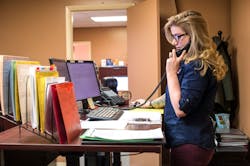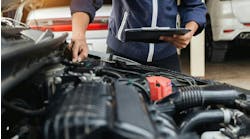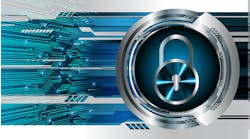Can shops that rely on DRPs also follow OEM repair procedures?
According to collision repair industry experts, the answer is “yes,” but it takes concerted effort, and an understanding of what’s at stake.
When it comes to following manufacturers’ procedures for each job that comes through your shop, experts say it's no longer optional.
“I think it’s 100 percent vital to every operation, every repair, every time,” says Erin Solls, director of OEM and industry relations for Certified Collision Group. “You have to do it to avoid critical failure.”
To back up her assertion, Solls, who is in constant contact with CCG’s network of high-performing shops, points to the rapid changes in vehicle technology and those that are on the horizon, specifically the 2024 Chevrolet Silverado EV, which will feature a “UltiBody,” according to GM’s chief engineer for battery trucks as reported by GM Authority.
“Cars have always been on a full frame or a unibody, but now we’re seeing a change in actual structure,” she says.
While the advancement of vehicle technology has been constant in recent years, body shop owners and industry experts frequently tell FenderBender that insurance companies seem to be unaware of newer and necessary repair operations, creating challenges in billing for repairs that follow OEM procedures.
“The fact of the matter is that (insurers are) reluctant to pay for operations that need to be performed that they question,” says Pete Tagliapietra, managing director of Datatouch, LLC, and a longtime industry vet with experience both on the insurance and shop sides.
That sentiment can come from shops outside of direct repair programs too, though experts say the way to carry out proper repairs both inside and outside of DRPs comes down to the same principles: training, documentation, and education.
Lay of the Land
With changing business models, just how prevalent are DRPs in the collision repair industry in 2022?
Solls says CCG doesn’t pump DRP information from its network shops, though the 2022 FenderBender Industry Survey can provide a snapshot of how many shops are involved in such programs.
Per the survey, which was conducted this spring, 35 percent of responding shops reported no involvement with DRPs; another 38 percent of respondents said they were on between one and three DRPs.
Of the remaining 27 percent of shops that said they’re involved with four or more DRPs, the largest proportion, 17 percent, reported involvement in four to six direct repair programs.
With more shops on fewer DRPs, what does the survey say about the use of OEM repair procedures? Answering the question, “Does your shop pull and follow OEM repair procedures for most repairs?” 82 percent of shops said, “Yes,” another 16 percent said “Sometimes,” while 3 percent said “No.”
Solls’ anecdotal experience with CCG shops, which are networked to share information and hold many OEM certifications, mirrors the survey findings.
“I talk to a lot of shops and they get it, they ask me, ‘Have you found an easier way to do it?’”
Both Solls and Tagliapietra, who, previous to Datatouch, was founder of NuGenIT, which developed software to pull OEM procedures based on estimates, agree that finding, absorbing, and then following such information can be cumbersome because there’s no agreed-upon terminology or format of documentation from OE to OE.Tagliapietra says the best body shops have folks dedicated to pulling repair procedures, and that third party providers like ALLDATA can be helpful in how they format the information to make it easy to find.
Beyond the time to find procedures, Solls says it’s then a matter of training up and giving technicians on the shop floor the skills needed to follow OEM repair procedures.
Educate and Document
Carrying out the operations called for in OEM repair procedures is one thing—how can shops deal with resistance from insurance companies, especially when a DRP is involved?
The answer involves bridging the gap between what shops know, and what the adjuster on the other end of the line may not know.
“The only option here is for the shops to inform the insurance companies,” says Tagliapietra, noting that many adjusters aren’t automotive damage experts, and that insurance culture makes them skeptics.
A turn away from estimates and towards detailed repair planning and blueprinting is one way to better document specifically what each repair requires.
“When a shop engages in a repair plan, the repair plan must include each procedure so they can support their request to be paid by the information contained in the repair plan,” Tagliapietra says. “With all the new technology, you just can’t write a 30-line estimate and expect everybody to lay down and pay what you want to be paid.”
Solls echoes his point, noting that shops doing repairs the right way may find themselves on an island, with documentation alongside education being their best bet.
“You hear a shop saying that an adjuster says, ‘You’re the only one doing (this operation).’ You might be—the other shops in your area might not have the training, they might not understand.” she says. “That’s where we take the time, show the procedures, show where the information is coming from, show the technical website, show that it’s coming from the people who built the vehicle.”
Solls says putting procedural information into layman’s terms is also a good strategy.
“Document your procedures, justify them, talk with your adjusters,” she says.
Share the Knowledge
Educating adjusters is a piece of the puzzle, as is educating customers about how complicated their vehicles are, says Dominic Martino, the longtime owner of Gold Coast Auto Body, a more than $8 million per year shop in Chicago.
Gold Coast was previously part of a large insurer’s direct repair program, but is no longer involved with any DRPs.
“It becomes a situation where, as an independent shop owner who is certified, you have to have a complete arm of your business that is educating guests and consumers in general,” he says. “Until consumers understand the (insurance) products they’re buying and the limitations of some of those products, we’re going to continue to have the conversation.”
Martino says a point of encouragement he’s seen recently is customers who understand the insurance claims process more fully through experiences with claims elsewhere, be it through homeowners insurance or in health care.
Solls says it will take an industry-wide push for OEM repair procedures to be better understood by insurers and shops alike, both those that rely on DRPs and those that don’t.
“As an industry as a whole … we just have to make more time and get the information out there, we have to talk to the shop down the street,” she says. “If you know the people at that shop, invite them to your shop, show it off, talk about documentation, show them what blueprinting is–if they don’t know what a blueprint is, they probably don’t have a framerack.
“It’s not a big secret, let’s share the knowledge, because bottom line, we need to fix cars the right way.”



